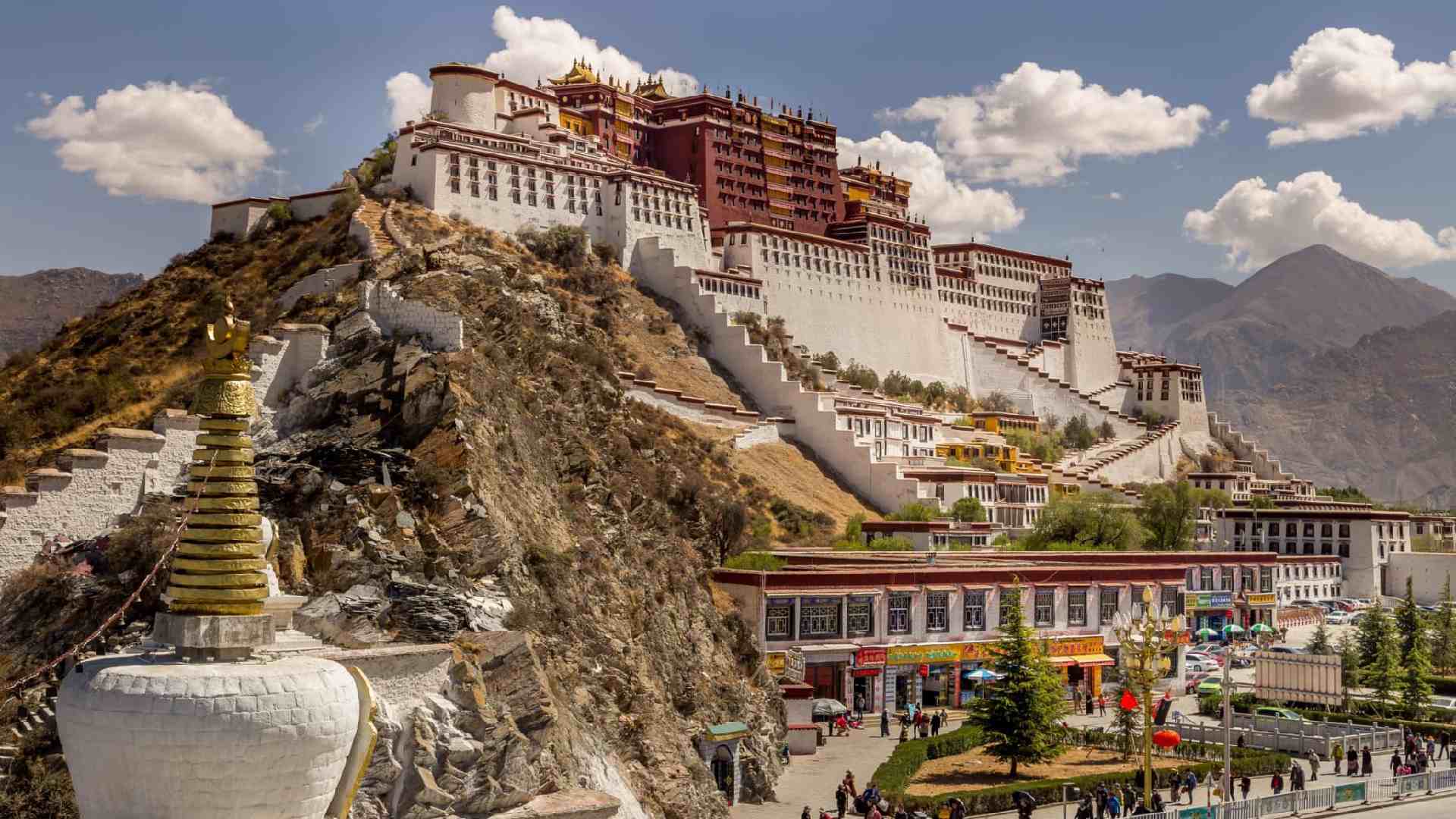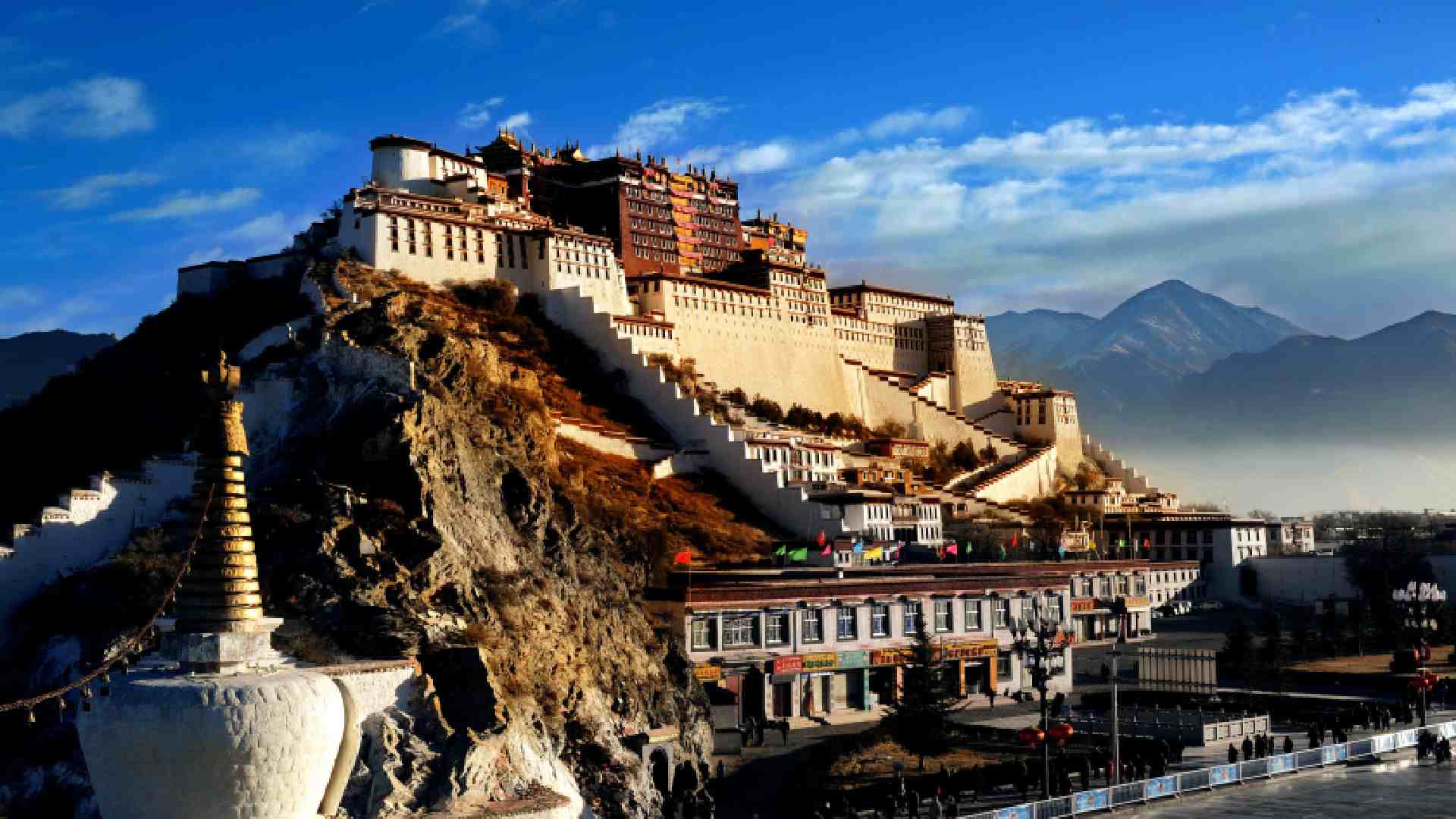
Potala Palace – Lhasa, Tibet:
Description: The Potala Palace is an ancient and iconic architectural wonder situated in Lhasa, Tibet. It is a magnificent palace complex that was once the winter residence of the Dalai Lamas and served as the administrative and spiritual center of Tibetan Buddhism. Perched atop Marpo Ri Hill, the Potala Palace stands as a symbol of Tibetan culture, history, and religion. It is a UNESCO World Heritage Site and a popular destination for tourists seeking to explore the rich heritage and breathtaking beauty of Tibet.
Visitor Fee: As of my last update in September 2021, the ticket prices for the Potala Palace were 200 Chinese Yuan (CNY) during the peak season (May to October) and 100 CNY during the off-peak season (November to April). However, these prices might have changed, and there may be additional fees for certain areas or photography permits, so it’s essential to check the latest information before your visit.
Transportation: Lhasa, the capital of Tibet, is accessible by air and train:
- By Air: Lhasa Gonggar Airport (LXA) is the main airport serving Lhasa, with direct flights from major cities in China.
- By Train: Lhasa has a well-connected railway station, and the Qinghai-Tibet Railway allows for a scenic train journey to Lhasa from various cities in China.
Things to Do:
- Explore the Palaces: Wander through the various chambers, halls, and chapels of the Potala Palace to witness the splendor of Tibetan art, architecture, and religious artifacts.
- Visit the Dalai Lama’s Living Quarters: Discover the private quarters and sacred spaces once inhabited by the Dalai Lamas.
- Panoramic Views: Enjoy panoramic views of Lhasa city and the surrounding landscapes from the Potala Palace’s rooftop.
- Jokhang Temple: Visit the Jokhang Temple, one of the holiest temples in Tibetan Buddhism, located in Lhasa’s Barkhor Square.
- Sera Monastery: Explore the Sera Monastery, known for its lively debates among Buddhist monks.

Why People Enjoy Coming Here:
- Spiritual Significance: The Potala Palace holds immense religious significance for Tibetan Buddhists and is a pilgrimage site for many devotees.
- Architectural Marvel: The grandeur and unique architecture of the palace, perched on a hill overlooking Lhasa, make it a mesmerizing sight.
- Cultural Experience: Visitors have the opportunity to immerse themselves in Tibetan culture, art, and religious traditions.
- Historical Journey: The Potala Palace’s history spans over 1,300 years, providing a glimpse into Tibet’s rich past and the legacy of the Dalai Lamas.
Age of the Place: The Potala Palace’s construction began during the 7th century AD under the rule of Tibetan King Songtsen Gampo. However, the present structure, with its 13 stories and 1,000 rooms, was mainly built during the 17th century under the fifth Dalai Lama’s reign. So, the current palace is approximately over 350 years old.
Additional Nearby Attractions:
- Norbulingka Palace: Located not far from the Potala Palace, Norbulingka is a beautiful summer palace and garden once used by the Dalai Lamas.
- Drepung Monastery: One of the “Great Three” Gelug university monasteries, renowned for its religious and historical significance.
- Barkhor Street: A bustling and vibrant street in Lhasa, famous for its circular path and traditional Tibetan shops.
List of Activities:
- Exploring the various halls and chapels of the Potala Palace.
- Witnessing the spiritual and religious rituals within the palace.
- Capturing panoramic views of Lhasa from the palace’s rooftop.
- Visiting other nearby monasteries and temples.
- Immerse in the unique culture and traditions of Tibet.
- Participating in guided tours to learn about the history and significance of the palace.
- Walking around Barkhor Street and experiencing the local atmosphere.
- Enjoying the serene ambiance of Norbulingka Palace and its gardens.